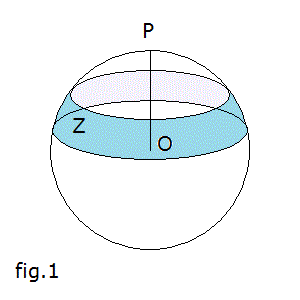
Notes by R. Bigoni
(from Note Didattiche)
Given a spherical surface Σ with center O and radius OP with measure R, two parallel planes φ and ψ such that their distance from the center O is smaller than R,
intersect Σ in two circumferences.
The region of Σ bounded by these circumferences is called spherical zone Ζ. The circles enclosed by these circumferences are its bases.

To calculate the surface of a spherical zone we can proceed in the following way:
let's draw from O a straight line OQ perpendicular to OP;
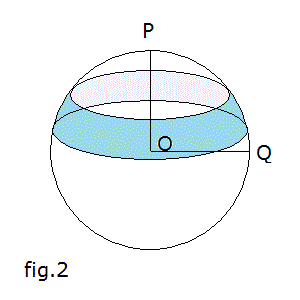
we assume the straight line OQ as the axis of the abscissas and the line OP as the axis of the ordinates;
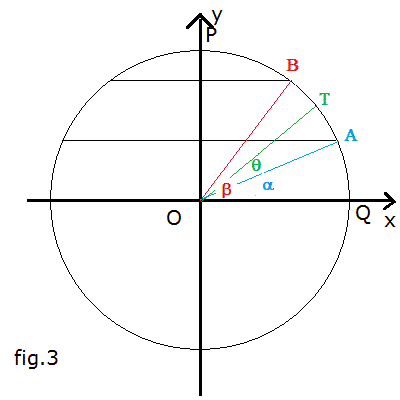
the points A and B are respectively the intersections in the first quadrant between γ and the planes φ and ψ; T is any point of γ;
the radiuses OA, OB and OT form, respectively, the angles α, β and θ with the positive direction of the x axis;
the coordinates of A, B and T are respectively
![]()
an infinitesimal segment dγ of γ has length
![]()
the area S of the zone Z can be conceived as the sum of the lateral surfaces of cylinders of infinitesimal height dγ and base radius
![]() with θ from α to β;
with θ from α to β;

if we represent by δ the distance between the planes φ e ψ
![]()
we get
![]()
With reference to fig. 1, the solid Ω bounded by the spherical zone Z and its bases is called spherical segment.
With reference to fig. 3 and with a method similar to that used for the calculation of S, the volume V of Ω can be calculated
as the sum of the volumes of the cylinders with infinitesimal height dy and base radius ![]() with y from yA to yB;
with y from yA to yB;





From the equation (4) we get

Moreover, if we apply the Pythagorean theorem

and subtract side by side
![]()

If we plug this expression for yA into the equation (12)

If in fig. 1 the plane most distant from the center is tangent to Σ in P, the resulting figure is said spherical cap.
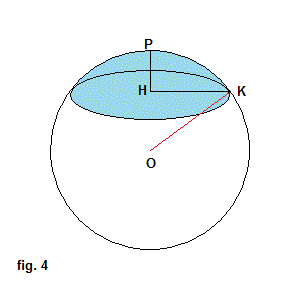
In fig. 4, H is the center of the base of the cap, P is its vertex, the segment HK is the radius of the base with measure r,
the segment HP is the height of the cap with measure δ and OK is the radius of Σ with measure R.
The equation (5) allows the calculation of the outer surface of the cap
![]()
Th equation (14) with xA=r and xB=0 gives the volume of the cap

If we apply the Pythagorean theorem, we get
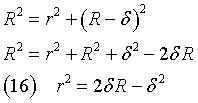
and, plugging this expression for r2 into the equation (15), we obtain

Given a spherical surface Σ with center O and radius R and the point E outside Σ at distance h from it, the portion of Σ observable from E is a cap whose area can be calculated as follows:
we represent the intersections of Σ and Γ with a plane passing through the line OE;
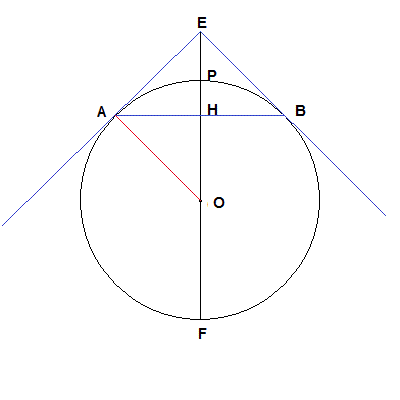
the section of Σ is a circumference; the section of Γ is an isosceles triangle with vertices E, A and B;
the height of the triangle lies on the line of the diameter EF, intersects the circumference in P and intersects the base in H;
the triangle EAO is similar to the triangle AHO
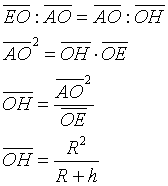
in the cap we have

and finally, from the equation (5),

The surface of Σ is S=4πR2, hence the fraction of Σ visible from E is

last updated: March 16, 2018